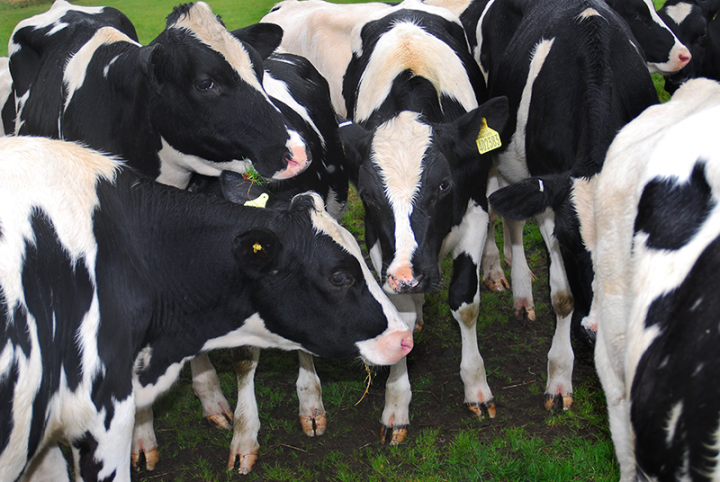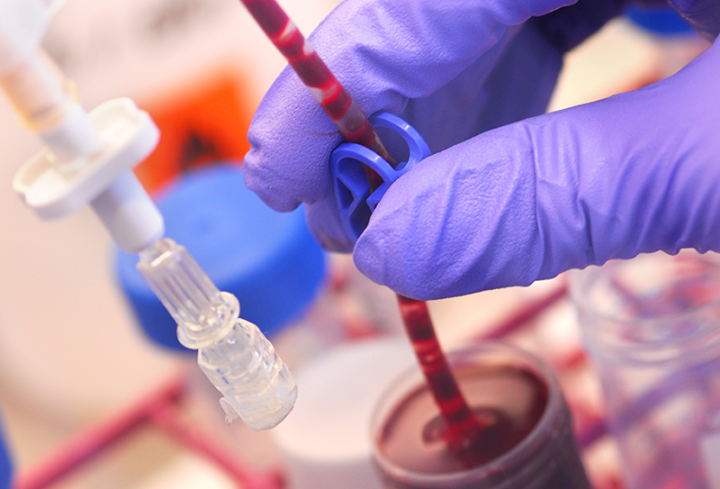Battling Bovine Tuberculosis
Developing vaccines for bovine Tuberculosis (bovine TB), a disease in cattle with huge effects on animal health and the economy.
Background

Bovine tuberculosis (TB) is one of the biggest challenges facing the UK cattle farming industry today. The current 'test-and-slaughter' policy has failed to constrain the spread of bovine TB; this is confounded by the presence of wildlife reservoirs of disease such as the badger. Control of the disease in cattle by vaccination may be possible, however there are no licenced vaccines currently available. Further understanding of the nature of vaccine-induced protective immunity is essential for the design of new vaccines and the implementation of successful vaccination strategies.
Research

There are currently no effective, deployable vaccines for bovine TB, although the BCG vaccine used in humans is known to induce protective immunity in calves. Professor Jayne Hope’s group are studying immune responses to the BCG vaccine to understand the mechanisms of protective immunity. This knowledge can be used for further vaccine design and implementation. One technique being used by Professor Hope’s group is a surgical model in calves that allows for the collection of cells that directly interact with vaccines following their injection into the skin. By studying these cells we can gain unique insight into the early vaccine-induced response and understand how protective immunity is generated.
Impact

The current ‘vaccinate and challenge’ model for screening vaccines is lengthy, costly and sometimes offers little insight into why a vaccine has failed. The tools developed by Professor Hope’s group allow for the assessment of early vaccine-induced responses and will provide understanding as to why vaccines are (or are not) effective. These studies will enable us to define ‘signatures’ associated with successful vaccination enabling screening of new vaccines or testing of new vaccination regimes. This will potentially reduce the need for large scale animal studies.
This novel approach to understand how protective immunity is induced can be applied to studies of a wide-range of animal diseases, as well as bovine TB.
One Health
Bovine TB has significant impacts on the human population not least because of the large economic burden to the farming industry. Alongside this, the causative organism of bovine TB, Mycobacterium bovis, can cause TB in humans, and is therefore a zoonotic risk. Understanding the nature of protective immunity in cattle can provide important insights for the control of TB in humans. Notably, the immunology and pathogenesis observed in humans and cattle with TB are very similar. Thus, cattle have been suggested as suitable models to study human disease. This fits firmly within the One Health agenda where research impacts on both human and animal health.
Key Publications
Hope JC, Guzman E, Cubillos-Zapata C, Stephens SA, Gilbert SC, Prentice H, Sopp P, Howard CJ, Charleston B. Migratory sub-populations of afferent lymphatic dendritic cells differ in their interactions with Mycobacterium bovis Bacille Calmette Guerin.
Vaccine. 2012;30(13):2357-67
Thom ML, McAulay M, Vordermeier HM, Clifford D, Hewinson RG, Villarreal-Ramos B, Hope JC. Duration of immunity against Mycobacterium bovis following neonatal vaccination with bacillus Calmette-Guérin Danish: significant protection against infection at 12, but not 24, months. Clin Vaccine Immunol. 2012;19(8):1254-60.
Hope JC, Howard CJ, Prentice H, Charleston B. Isolation and purification of afferent lymph dendritic cells that drain the skin of cattle. Nat Protoc. 2006;1(2):982-7.
Improving vaccine-induced responses in cattle

